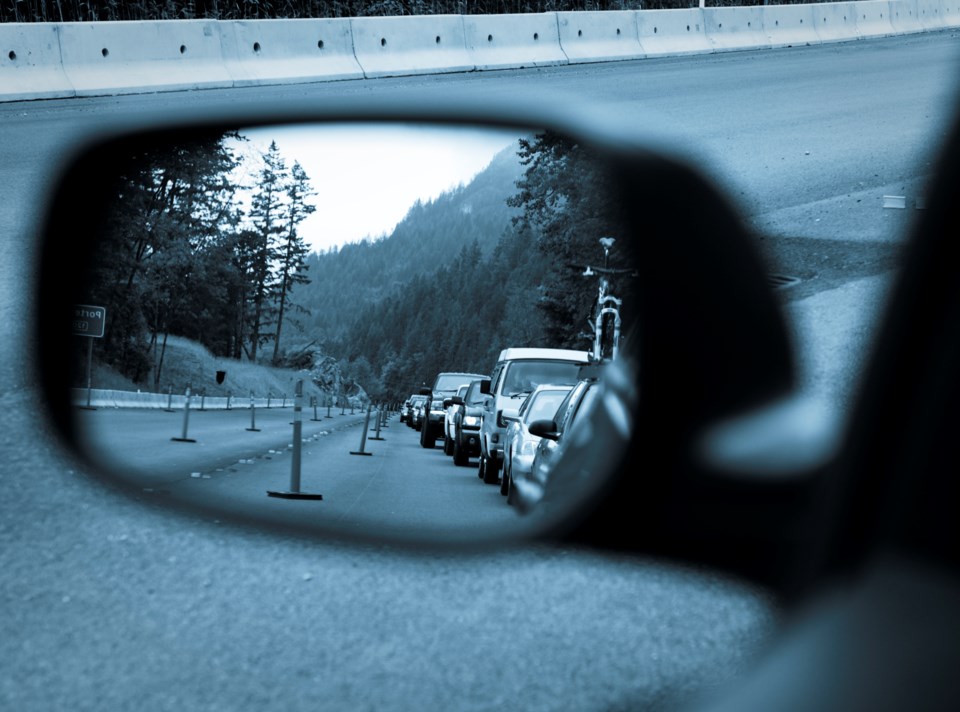I am often reminded of a visit from my father some years back, during which we found ourselves waiting to turn left at the stop sign at Lorimer and Northlands.
As a stream of vehicles passed in front of us, I lamented how much I hated this particular left-hand turn sometimes.
It’s just so damn busy, I said, after we were forced to wait for three minutes or so that felt like an eternity.
Having worked for several years as a truck driver in Fort McMurray, Alta., my father only laughed.
“This is not busy—try driving in Fort Mac at rush hour!” he said.
I think of that anecdote nearly every time I turn left onto Lorimer, and have to wait more than a few seconds.
In recent years, save for the pandemic-induced down period of 2020 through 2021, there has been no shortage of talk about the busyness of Whistler; of overtourism and the impacts of potential future growth.
We heard the Balance Model Initiative predict more visitors, more residents, and 50-per-cent more traffic congestion by 2040; we saw record numbers of users in our parks, to the tune of a 77-per-cent increase from 2019 to 2021.
And yet, for all the discussion, one gets the sense that the gravity of our current situation has yet to truly hit us—that Whistler doesn’t yet know what “busy” actually means.
Sure, in the nine years I’ve lived in Whistler, we have seen our share of good years and bad years, our ebbs and flows of visitors, and locals can always predict when traffic will be at its worst: at the beginning and end of a powder day, for example, or on any long weekend.
Locals know the best times to go (better hit the highway in the early afternoon if you’re driving north from Function on a sunny Friday) and when it’s best to just stay home (Ironman, anyone?).
But this is the first year I have actually felt the resort getting busier, day in and day out.
When I make the drive to and from Pique’s Function Junction office, I get the sense there are more cars on the road than in previous years.
But according to the Resort Municipality of Whistler’s traffic counter on Highway 99 at Brio, the average daily volume of traffic is actually just on par, and in some cases slightly below, where it was in 2022.
The highest month on record was August 2018, when just over 27,000 cars passed the tracker each day, northbound and southbound, on average.
For comparison, August 2021’s average was 26,549, and August 2022’s was 25,785.
The highest daily average recorded so far in 2023 was 22,589 in March—well below the numbers posted in the record-setting August 2018.
So why does it suddenly feel busier?
That answer, again, can be found in relativity.
The lowest daily average on record is 9,598 cars, which were tallied in April 2020—otherwise known as The Month the Earth Stood Still.
But as the impacts of the COVID-19 pandemic and its travel restrictions lessened, then went away entirely, the number of cars passing the Brio counter each day slowly climbed.
In 2020, the 12 daily averages per month added up to 223,228 (bear with me here, as this equation is far from an exact science—but it does show which way things are trending).
In 2021, the averages added up 244,838, and in 2022 they hit 262,684.
So, relative to the last three years, Whistler is getting busier.
But we’ve still got a long ways to go before things get out of hand.
And, relatively speaking, Whistler is still not that busy.
Take the 2010 Games, as one example. I wasn’t here for the Olympics, but I suspect those who were remember an altogether different stratosphere of “busyness”—one that makes recent years look positively quaint in comparison.
Or compare our local and regional perspective to that of more populated areas.
I recall a somewhat ill-advised road trip I once took into the heart of Los Angeles, driving hungover through an endless maze of concrete freeways, some five or six lanes wide, alongside a swarm of aggressive Californian drivers laughing at the bumpkins with the Saskatchewan licence plates.
More than once I found myself cursing the day I decided to make that drive. I’ll never do it again, but I’m glad I did once—because it affords me valuable perspective.
And that particular concrete hellscape is not even the worst in North America—that honour goes to the section of Highway 401 that passes through Toronto, which reportedly carries an average of 500,000 vehicles per day (I don’t know about you, but I’ll take the Creekside Crawl to that clogged commute every time).
So as I’ve pondered the subtle changes in our local traffic flows, I’ve come to a somewhat distressing (if obvious) conclusion: it can, and in all likelihood will, get much worse in the years ahead.
That’s why the work of the RMOW’s Balance Model Initiative will be crucial moving forward.
As of May, the RMOW said it was working on a “review and refinement of the tool, to ensure the model is as strong as possible,” a communications official said at the time.
“An external consultant has since been contracted to add an additional layer of strength, and we’ve started testing problems to see if it is delivering as expected,” they said. “We are now in the final stages of Version 2 and should be back before Council in the next few months.”
So expect more on that soon—relatively quickly, let’s hope




